Traditions, toys and all the trimmings: Christmas in Seiffen and the Ore Mountains
This website uses affiliate links which may earn a commission at no additional cost to you. As an Amazon Associate I earn from qualifying purchases.
Updated: 1st December 2020
The chill in the air didn’t phase me, and I was simply praying for snow to come and complete the picture. Like a big kid, I was merrily dancing between wooden toy shops, mulled wine moments, and festive window displays everywhere.
If Christmas were a place, it would look and feel just like this. Seiffen, in the Saxony Ore Mountains, was about as festive as it can get and within moments of arriving I declared I never wanted to leave this magical wonderland that seemingly put reality on hold for Santa.
There was in fact so much Christmasy feels on my December visit to Saxony I’ve split this article into two parts. If you want to know all about the stars, gingerbread, stollen and many markets that make up a Christmas visit to Dresden, click the link and start there. But here, in the Ore Mountains, is where a very different festive trip began for me.
In Seiffen it’s not all about the markets when it comes to Christmas, it’s about the whole town. From the miners’ traditions to the snow-lined roofs and golden hues of the candles in windows, if you want to go on the ultimate Christmas vacation this is truly one of the best winter destinations in Europe.
The journey to Seiffen had been a blissful car journey of untouched towering trees and wide open spaces, eagerly awaiting a touch of smooth white snow to complete the perfect postcard picture.
Read more: Things to do in Dresden
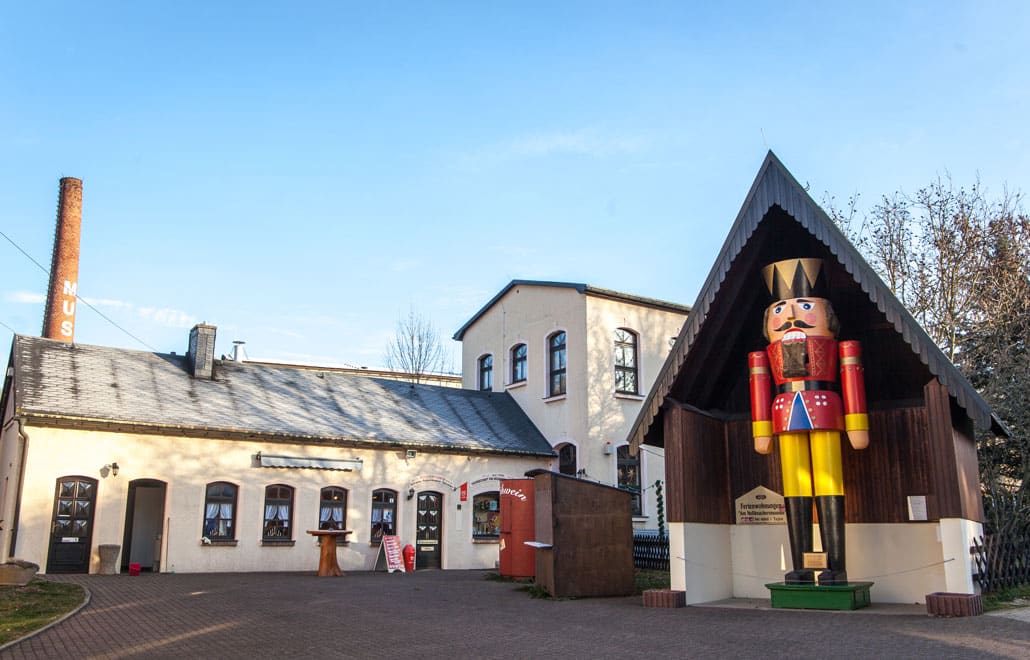
Nussknackermuseum Neuhausen
At Neuhausen, a small village sitting under a white castle, I got my first taste of Christmas traditions, of which there are many to be found, in the form of the Nussknackermuseum.
If you’ve ever seen one of these detailed dolls, whose mouths will crack a nut, you’ll likely know they are a staple Christmas decoration for many around the world. Well, these started right here in 17th century Saxony, especially in the Ore Mountains. While initially not just for the festive time, over the years they became associated with the Christmas holidays, and here at the museum, you can see 1000’s of the dolls from around the world, including the smallest, and the Guinness world record holding largest of them.
Continuing from Neuhausen I was beyond excited to arrive at Seiffen, like a kid in a candy store, the Christmas cheer levels were now over 100-percent, and I’d almost forgot I was here to work on a film, as we drove into what could be a festive movie set.
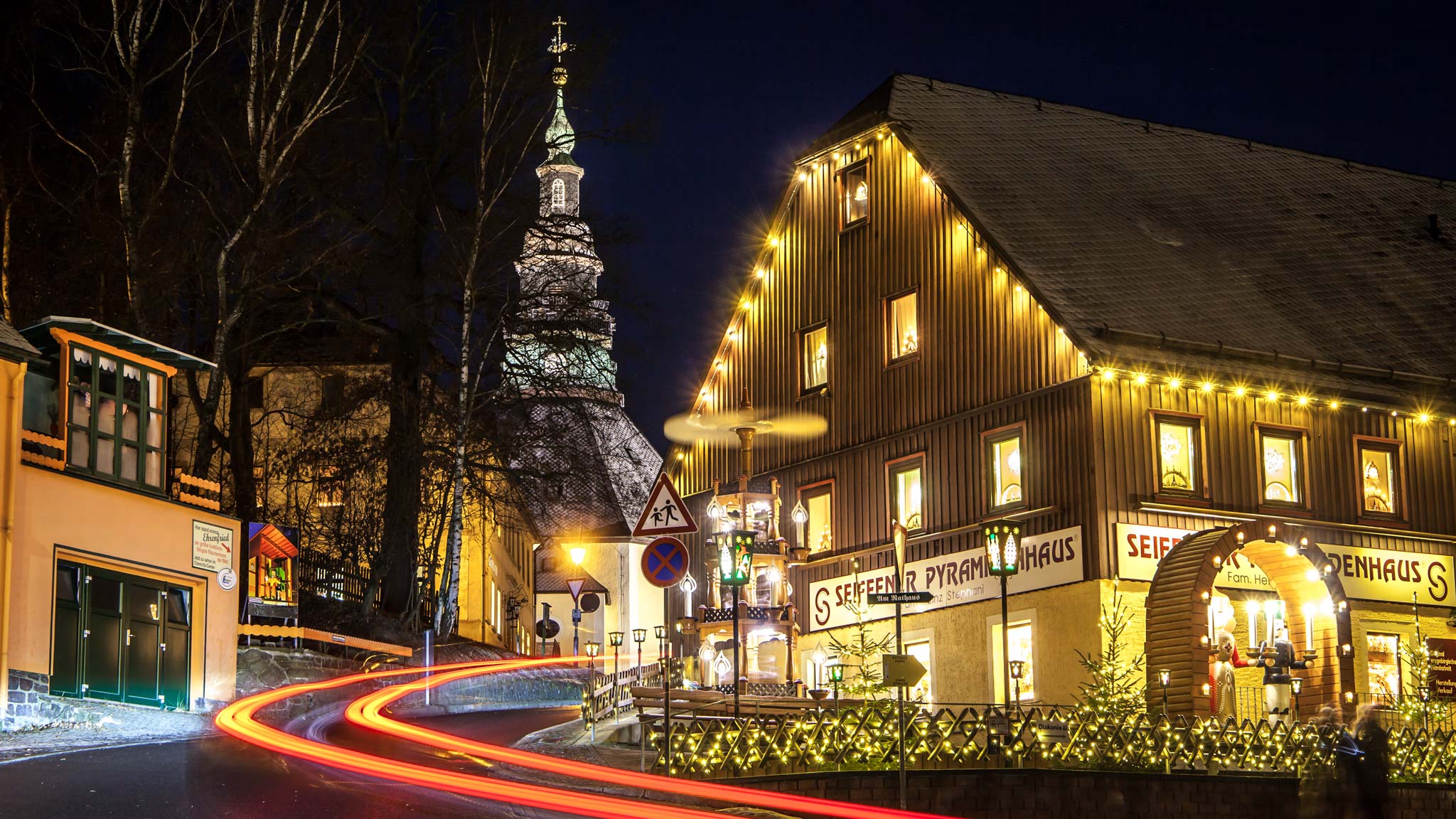
Welcome to Seiffen
Seiffen, and all across the Ore Mountains, you’ll find traditions in abundance. Many directly relating to Christmas, and many others relating to the history of these old Miners’ towns.
I was quickly learning on this trip that Germany, or rather Saxony, was a place double-downed on its traditions. People here seem to cling on to traditions with the same loving warmth a child clings on to their favourite doll, and it was beautiful to see.
Christmas in the Ore Mountains isn’t just a few week affair though, here in Seiffen the toy makers and festive shops are a year-round event, and while the festive magic is heightened in December, if you need a summer Christmas pick me up, I’m convinced you could still find it here!
Whether you opt to enjoy the magic of the ‘Reifendrehen’ (wood turning) in the Seiffen workshops, admire the delicate lace making in Annaberg, or warm your heart seeing the Kurrende children wandering the streets carolling, Christmas always comes early in the Ore Mountains.
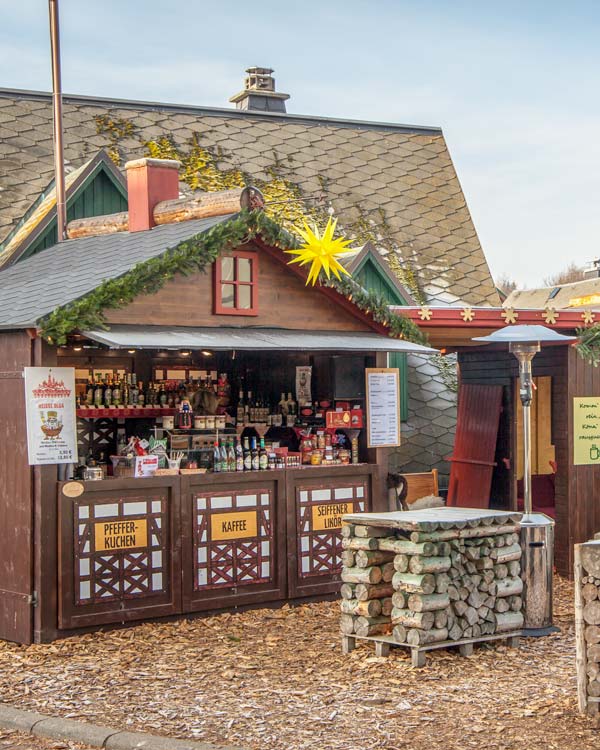
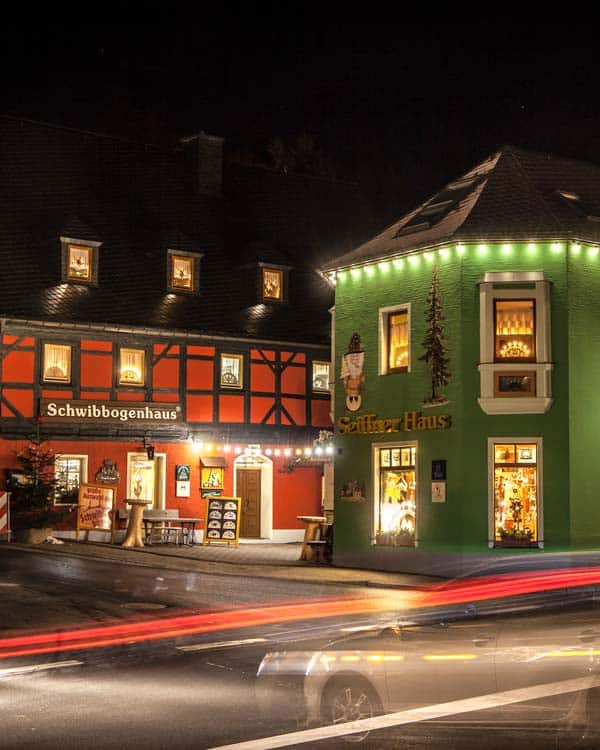
Wendt & Kühn-Figurenwelt Seiffen
While the whole town is awash with festive cheer and stores, let me take you on a tour of some of the most prominent you can visit to admire the handicrafts that still, to this day, offer handmade perfection in their products.
The Wendt & Kühn-Figurenwelt shop in Seiffen is the perfect example. The world-famous depiction of Christmas, the angel, is immortalised here in the most ornate of ways.
While Wendt & Kühn-Figurenwelt make beautiful handicrafts of all kinds, it’s perhaps the green-winged, white dotted angels which are the most famous and adorn trees, music boxes, and living rooms throughout the country. Whether you prefer your angels floating gracefully, or rocking out on a guitar, this beautiful hand-painted collection will oblige.
Inside their Seiffen store you’ll find giant music boxes, and a history lesson of their production, making it the perfect place to escape the winter chill for kids, and big kids, alike.
With the angels in production since 1923, and unusually for that day, created by two women, there is a long story about the growth of Wendt & Kühn, and here you’ll be able to start your journey into learning about the traditions of the Ore Mountains.
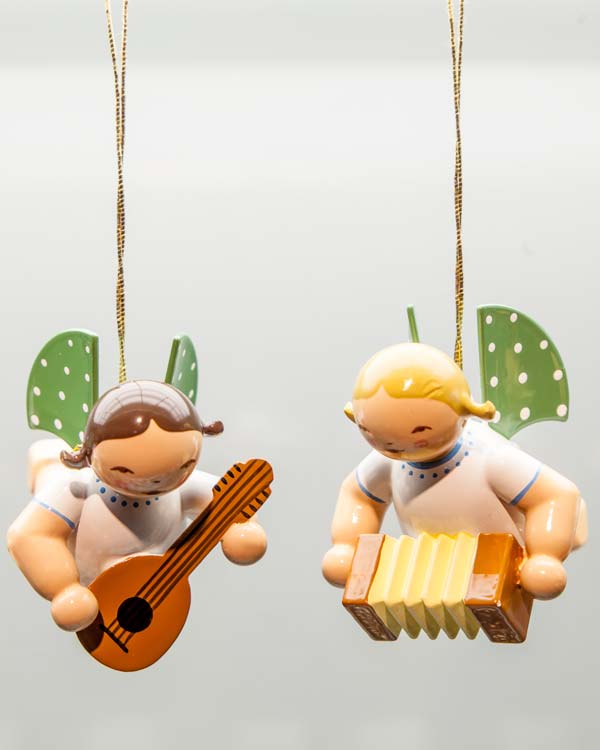
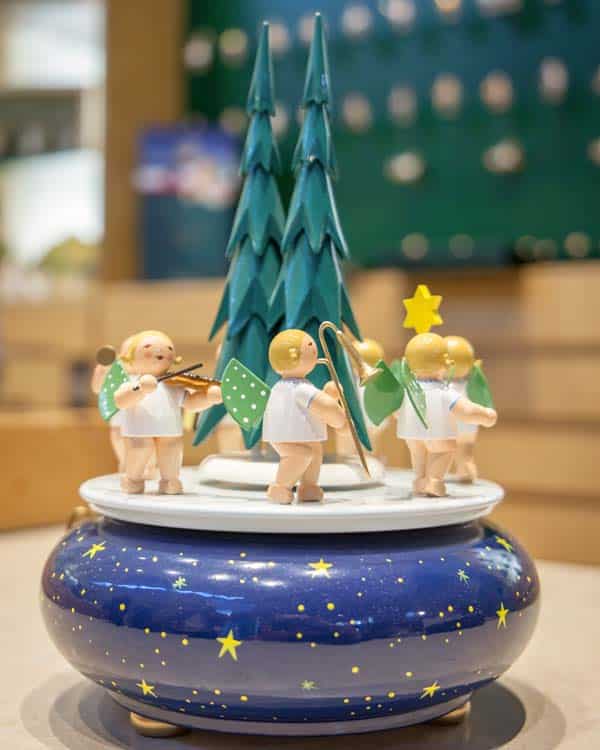
Mountain Church Seiffen (Bergkirche Seiffen)
While the church in Seiffen might not boast the grandeur and scale of most other European churches, it does have another card up its sleeve.
The octagonally shaped church is famous the world over, so much so that in Texas you’ll find a reconstruction of it. As with everything in the Ore Mountains, that fame can be linked back to the toy makers of this town whose loving handiwork went into making the church what it is today.
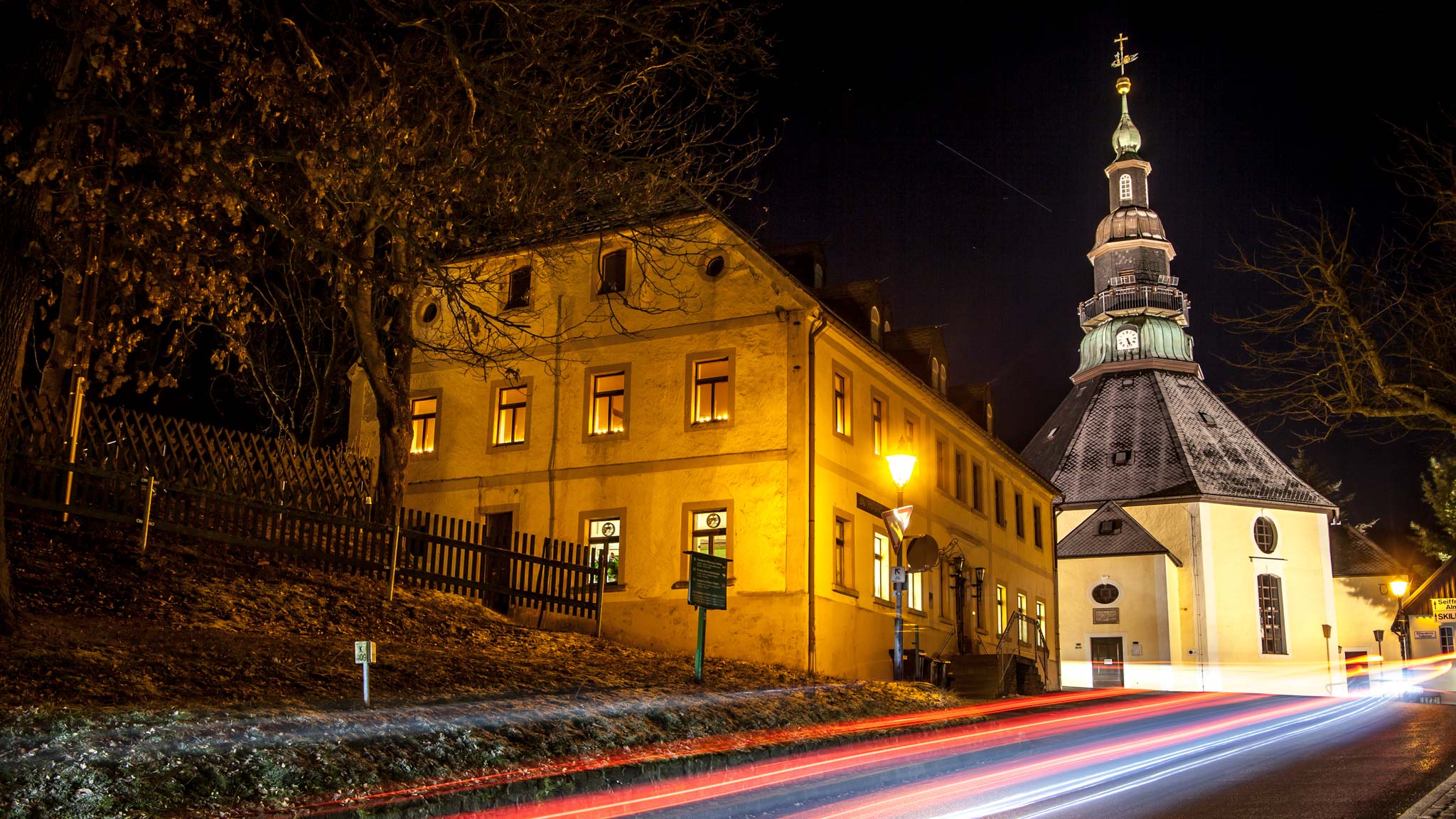
The late Baroque church was where the miners would convene for their quarterly church service when they would come up from the mines for a break. Over time, as the mining work died down and those very same miners’ turned their hands to woodcraft, the church, which is mainly constructed from wood, got multiple facelifts. Inside the compact space, you can see much of the new wood-work additions, and each one proudly states the date it was added to this unique building.
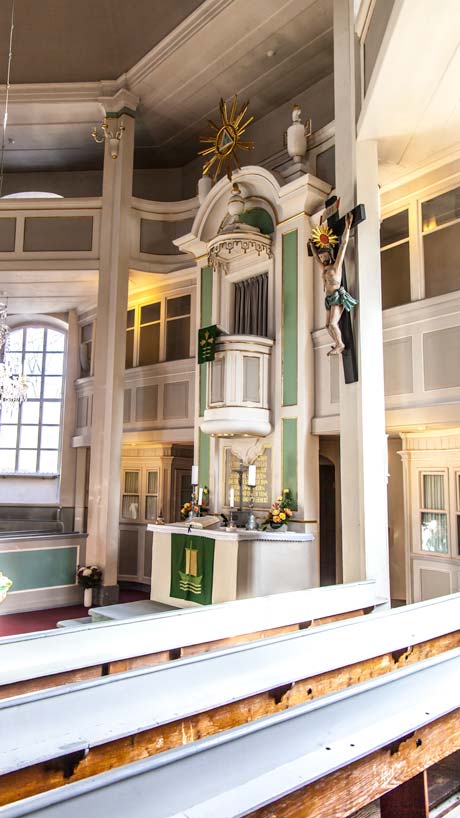
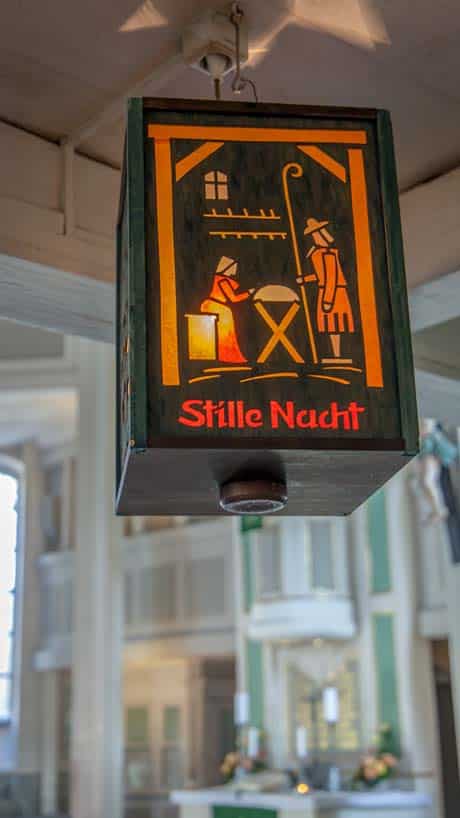
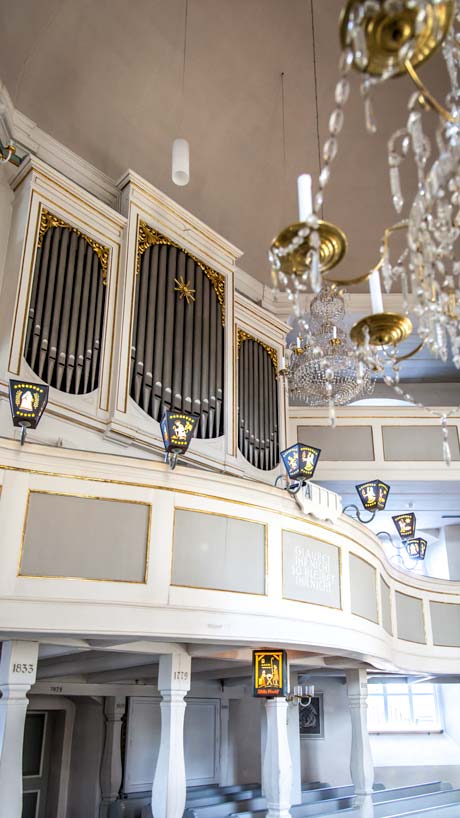
Erzgebirge Open-air museum with ring turning workshop
A short drive from the town itself and you’ll arrive at the open-air museum of Seiffen, which may sound a little chilly in winter but it’s well worth a visit regardless.
The fourteen houses that make up the museum shows what life was like in the olden days, from the way the houses were constructed to the interiors. The real reason to visit here though is to see one of the old ring turning workshops still in use.
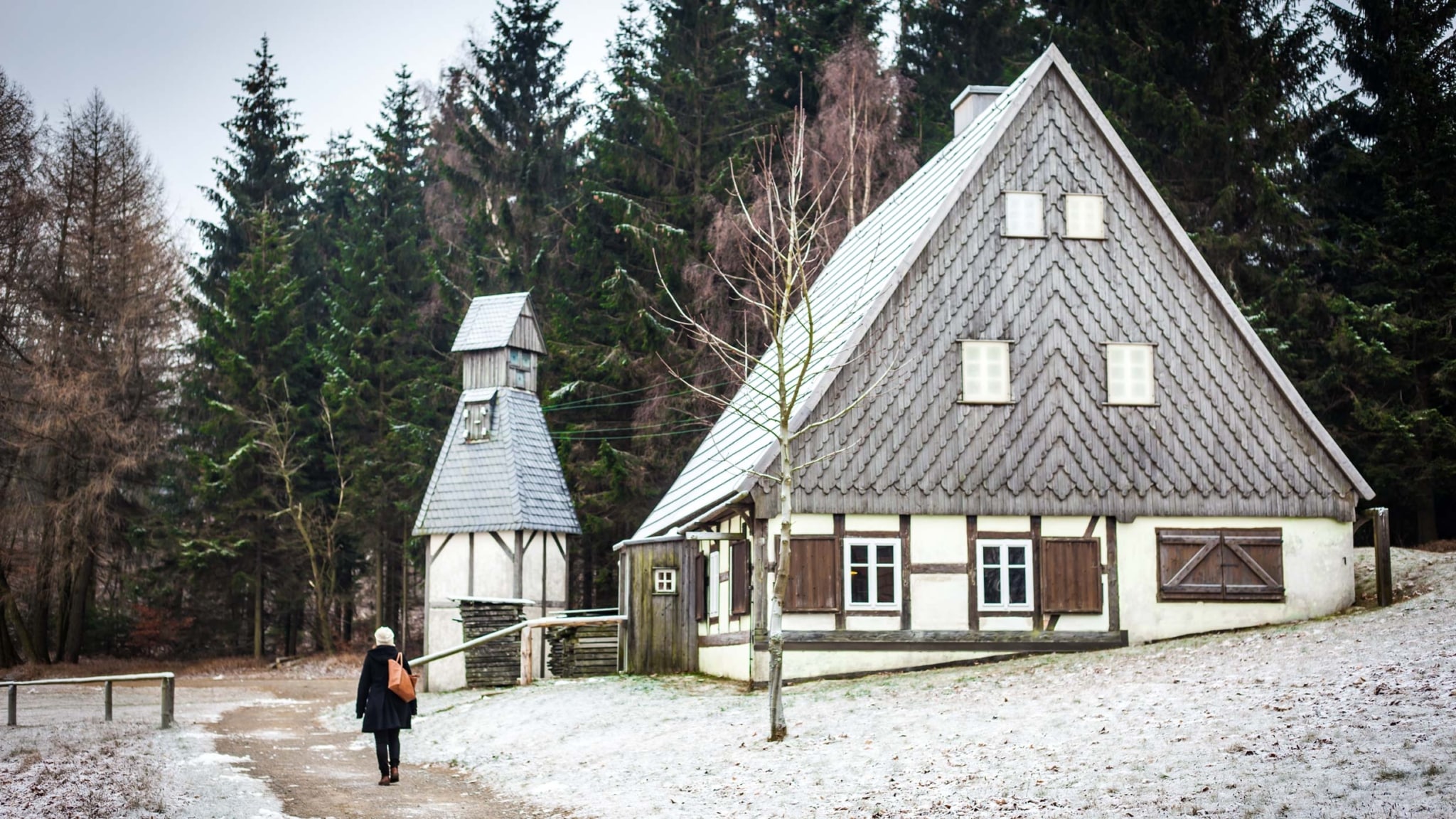
Only eight people in the town still create the wooden toys in the traditional way, turning the wood and shaping it by hand and here, in a small darkly lit room, you can meet one of the men keeping the tradition alive.
I stayed and filmed in here for longer than I needed to, but if I’m honest, I was fascinated by the loving care that went into the work before my eyes. As shavings of wood flew in all directions, and the first snow of the day started gently falling outside, If you had lit a fire and handed me a Glühwein I could have happily sat here marvelling at this tradition all day.
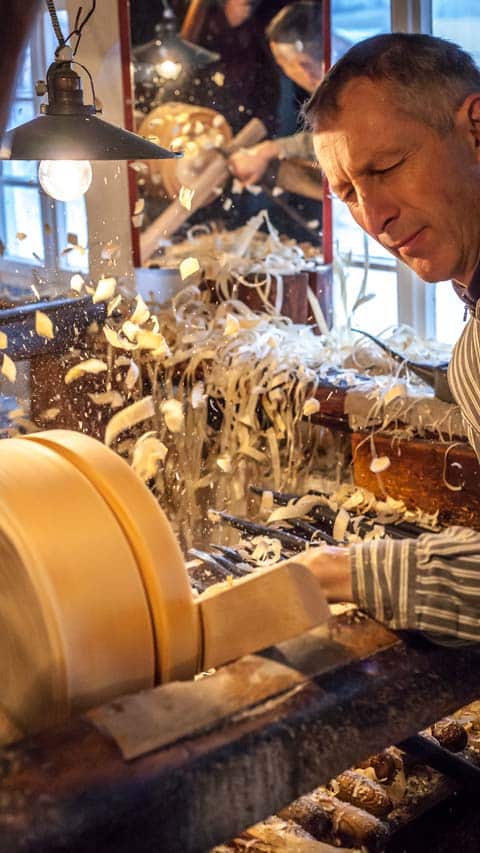
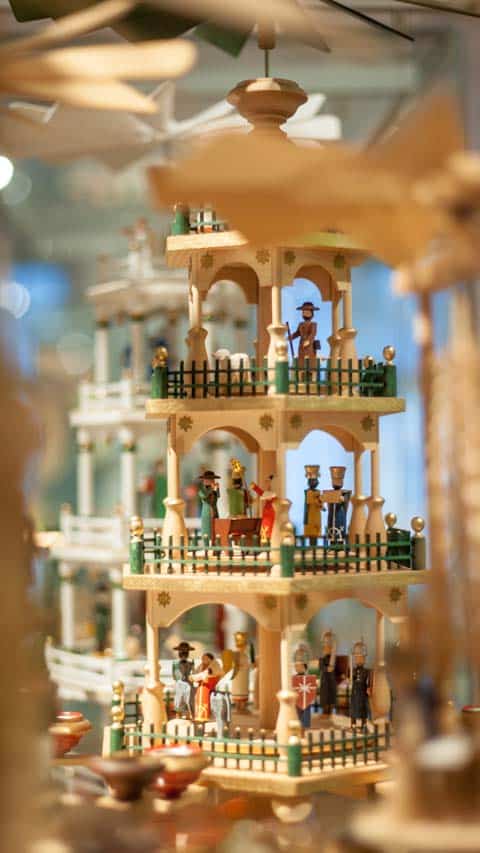
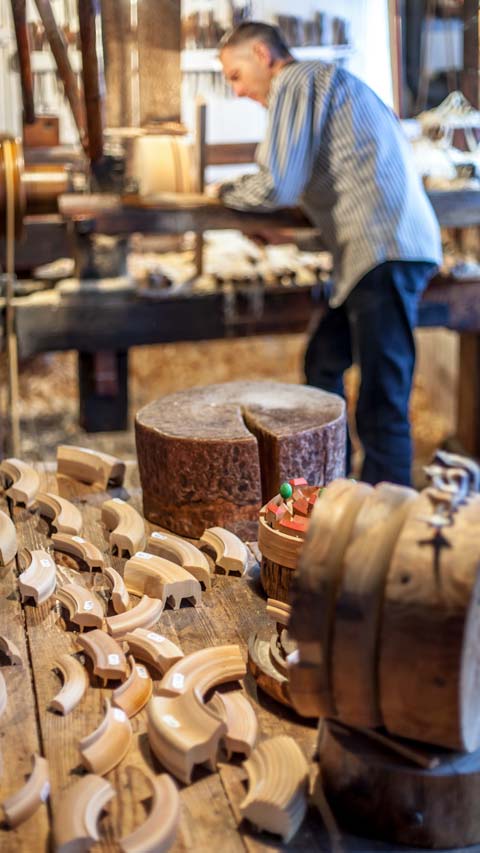
Ore Mountain Toy Museum in Seiffen
Returning to the town it’s time to see how this traditional wood production had evolved over the ages, and at the Toy Museum in Seiffen you an do just that.
As previously mentioned, when the economic crisis came following the mining work crashing, the wood-turning became a way of life in the Ore Mountains.
Initially, the focus wasn’t on Christmas toys; it was far more practical in that. From bowls to spoons, the wooden products initially produced were for the home, but by the 18th century, the wooden toys were produced, and the tradition was born.
Strolling through the museum, you’ll see farmsets, spinning wheels, and even matchboxes with delicate tiny sets of wooden toys: these span for 100’s of years and are a reminder of how different kids toys are now from just 30 odd years ago.
As the toys became more famous on the global stage, and exports to other countries began, this small town suffering a miners recession suddenly become a mecca of Christmas and year-round wooden toy production, and thanks to the festive feels here, I’m so glad it did!
Read more: Best places to visit in Saxony, Germany
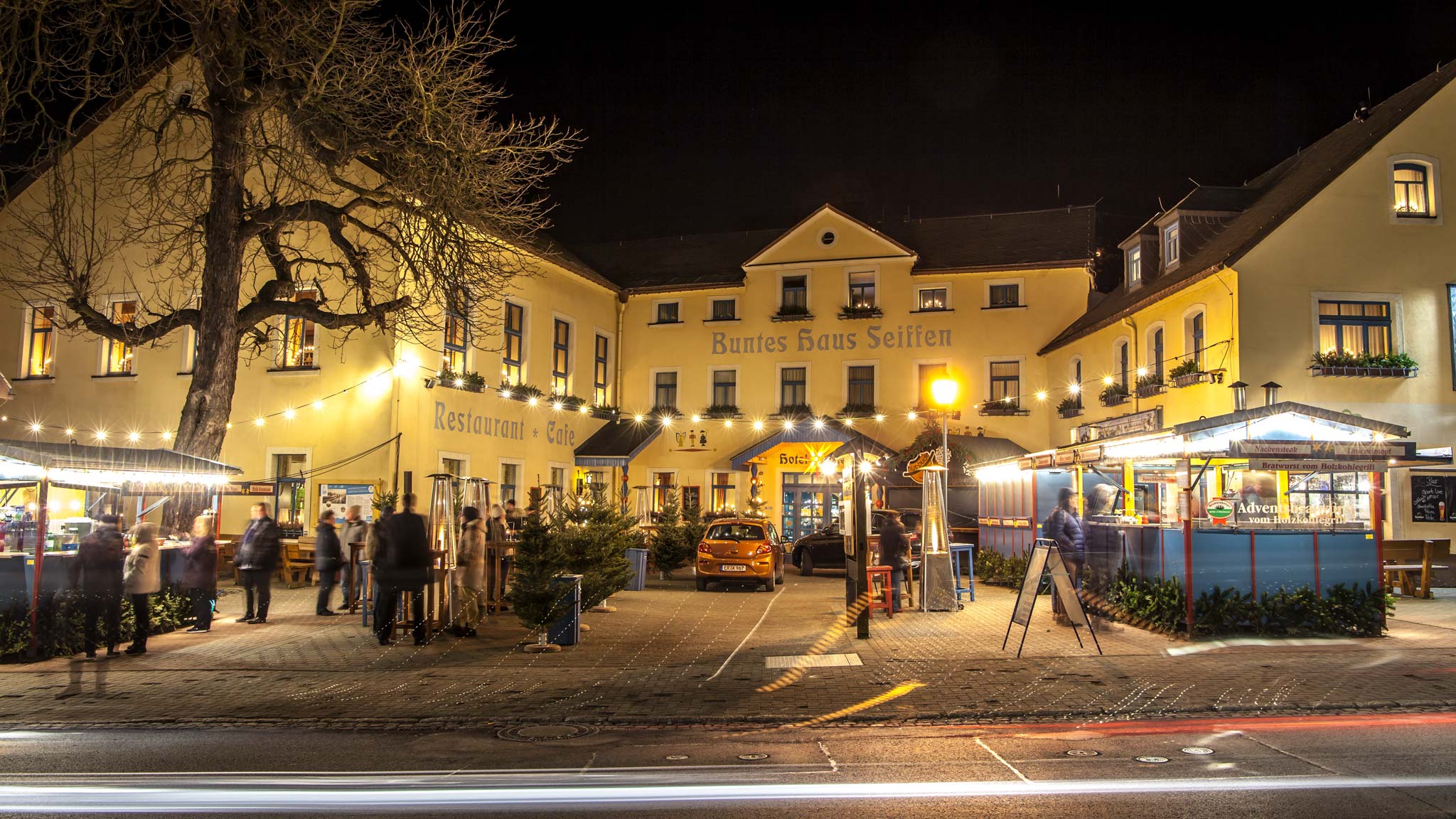
Hotel Erbgericht Buntes Haus
Checking into a hotel that literally translates to Colourful House, we strolled past merrymakers drinking Glühwein in the hotels’ courtyard. Festive music played in the background, warm fires roasted on the pavement, and smiley faces huddled around Christmas trees as we opened the door and stepped back in time.
This family-run hotel certainly lived up to its name, from the yellow and blue hallways to the colourful toys sitting outside each room. I felt like I was sleeping inside Christmas itself, but down in the main dining room, kitted out as Christmassy as you would expect, another of the many Ore Mountain traditions awaited.
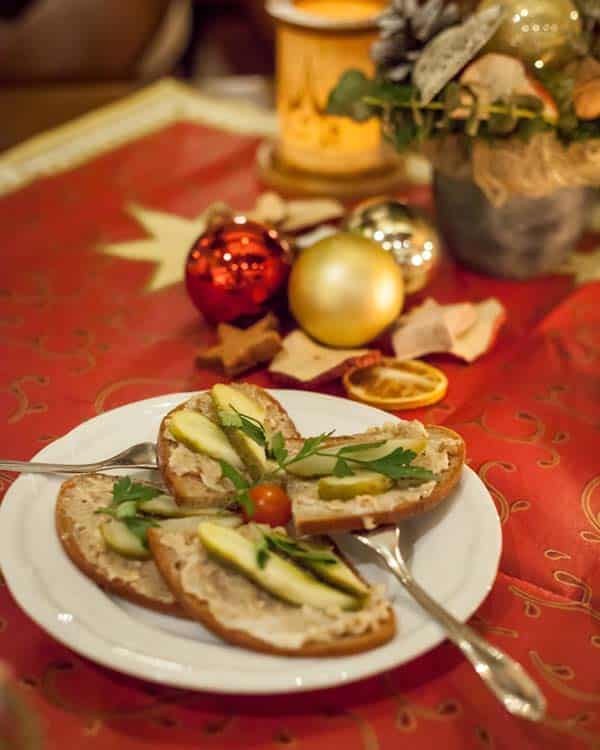
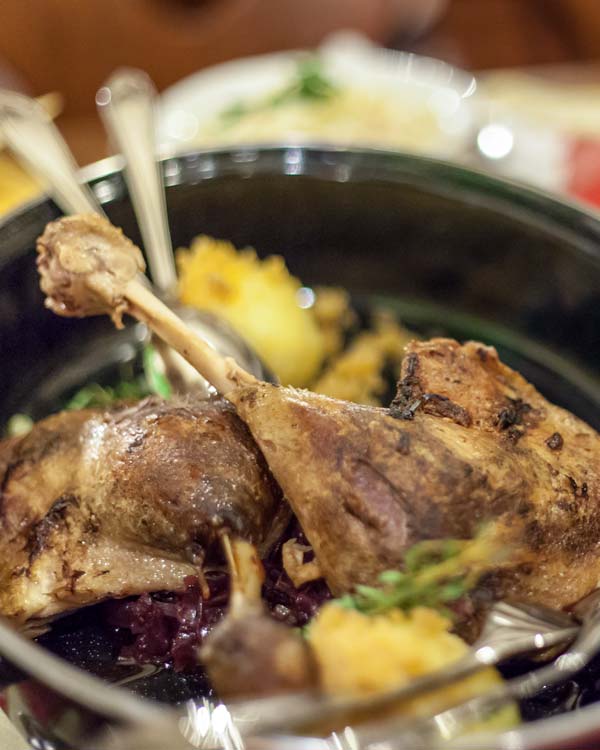
The traditional Neinerla dinner
On Christmas Eve, on days gone past, the miners of the Ore Mountains would down their tools, leave the mines, and make their way back to their families.
For a homecoming feast, the Neinerla would be served. Consisting of nine different dishes, this indulgent banquet is best enjoyed in your loosest of trousers as the table kept piling up with more food, I could only imagine the joy of someone who had lived underground for months being able to enjoy such a grand meal.
Each dish of the Neinerlaa represents something; whether it’s for health, money or love, only the mother is allowed to leave any of the food. Each other dinner should have a spoonful of each dish and ideally clean their plates. Otherwise, the good fortunes for the next year might not come to be.
From Sauerkraut with Bratwurst, through to the Goose legs with cabbage, the meal is a luxurious treat from appetiser to dessert. If you find yourself in the Ore Mountains, then be my guest to go all out and order this tradition, with tradition being the perfect excuse to sample a whole host of flavours before rolling to bed warm, full and happy.
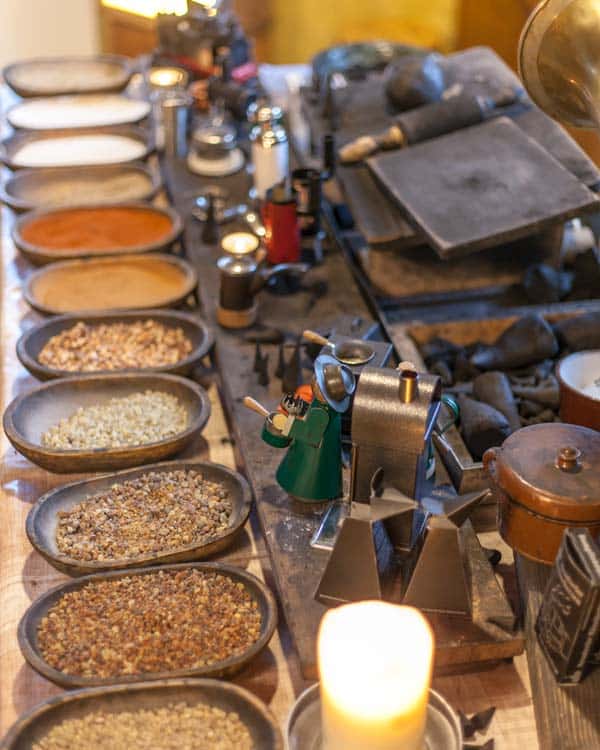
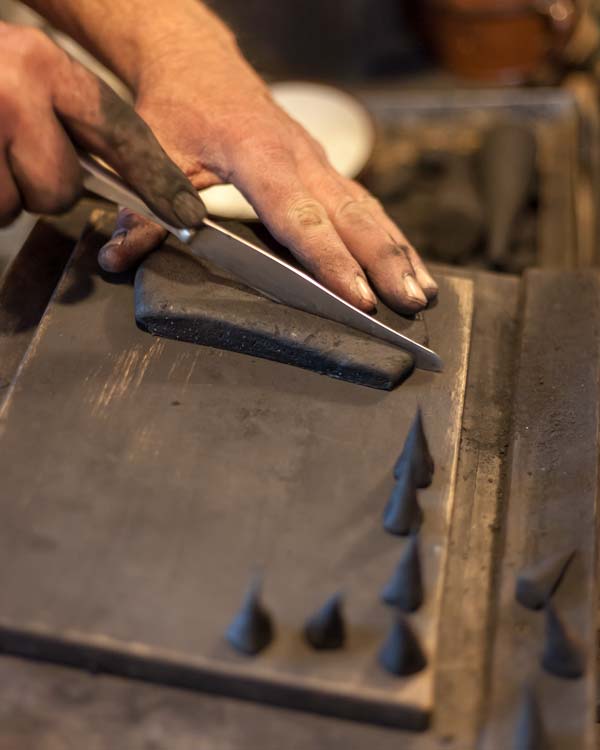
Making HUSS Incense Cones
Driving out of Seiffen I could feel my heart sink a little. Why would anyone want to leave the festive cheer of this magical world? Luckily, I wasn’t heading back to reality, just to discover more of the Saxony Christmas traditions.
First stop of the day was to the workshops of the HUSS Incense Cones. These all natural ingredient scents are handmade, and the wafts of various flavours from honey to vanilla are well linked to the festive season.
As I watched one of the talented makers roll a selection of ingredients together, it felt like a cooking show. Once all the ingredients have been combined, small chunks are cut off, rolled into the pointed shape, and then once set lit at the top to allow the aromas to take over the room.
If you’re not content watching this therapeutic process at work, here in the workshops, you can also follow the steps yourself to create your own incense cones, the perfect handmade gift to take home with you.
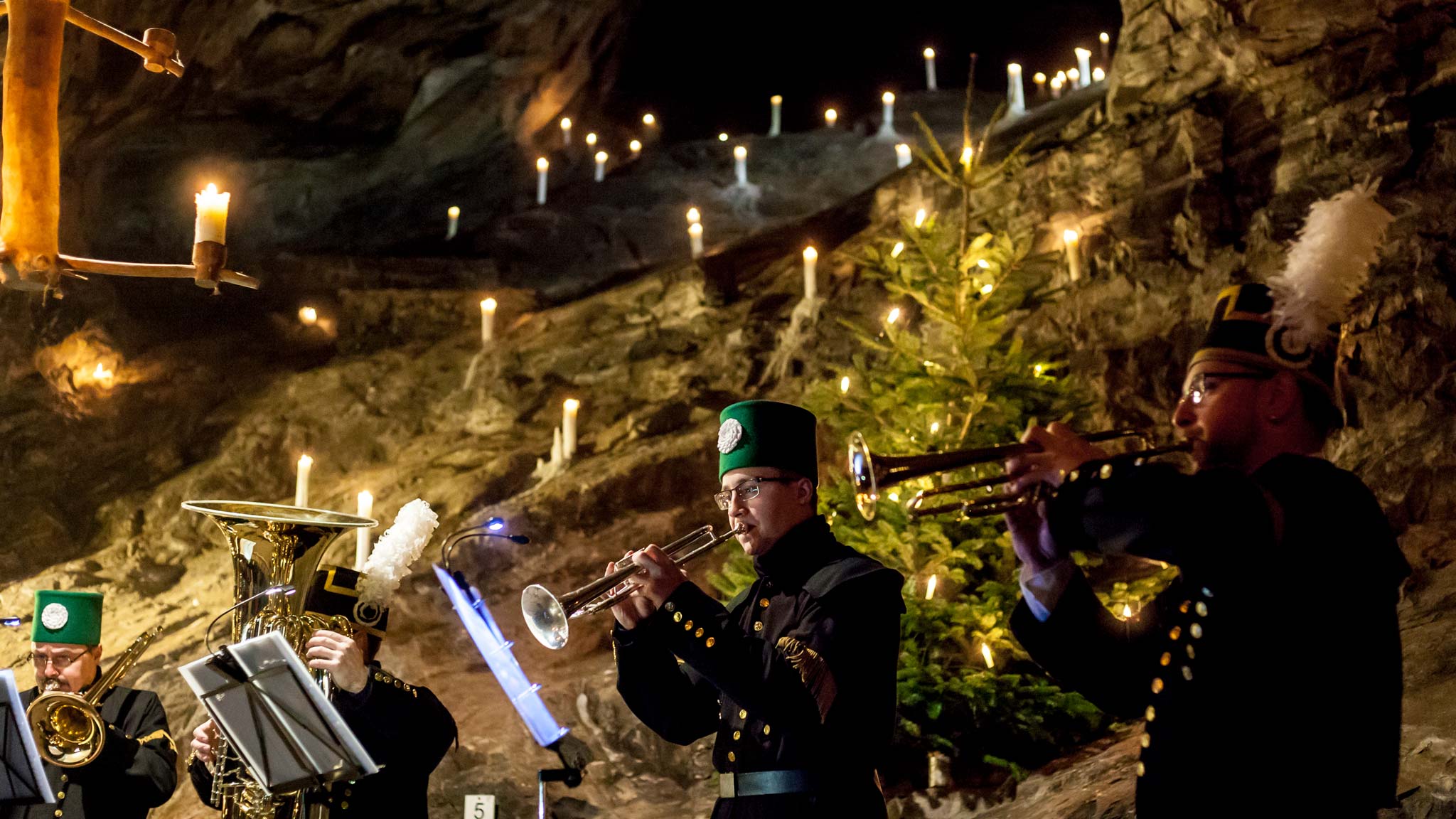
Mettenschicht at Schaubergwerk Herkules-Frisch-Glück mine
The next moment on my festive Saxony itinerary was perhaps the highlight of the whole trip. A little forward planning needs to be undertaken if you want to join one of the Mettenschicht, which is the last shift of the miners on Christmas Eve.
While these events are now more traditional and a reenactment, the good news is they happen at various mines across the Ore Mountains on different dates throughout the month and although you may not understand much if your German ist nicht gut, the experience itself is well worth getting the ticket for.
At the Herkules-Frisch-Glück mine, one of the many old mines you’ll find here, we all assembled and sported fashional hard hats before making the journey deep into the mine. Following the dimly lit underground path for 500-metres, we arrived into a cave illuminated by glowing candles and festive cheers. Traditional bread with goose fat and Glühwein welcomed us, as we took our seats for an hour of readings, music and warming food in the cave-like setting.
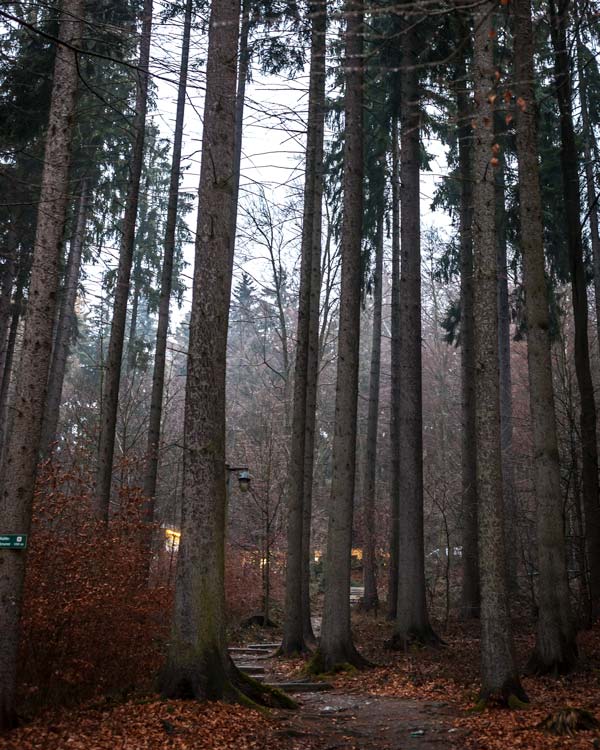
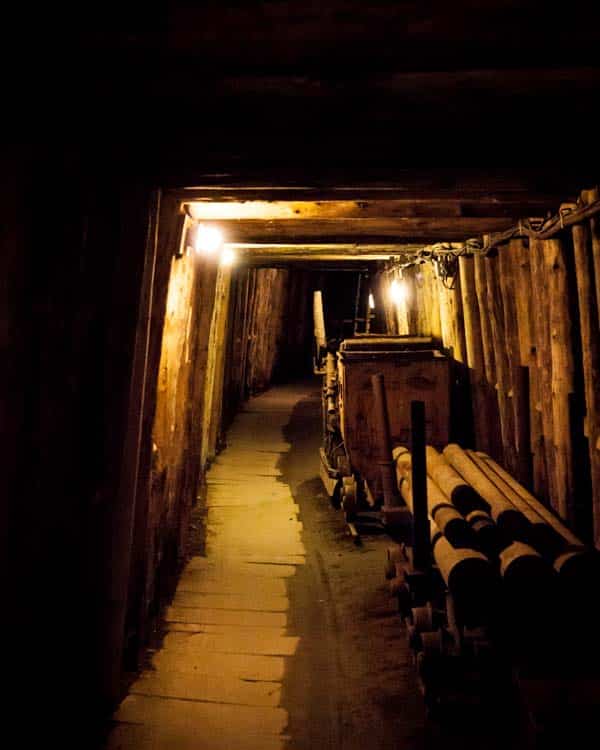
I’m a sucker for traditions, as in this fast-paced modern world they can quickly fall by the wayside, but if there is one thing I took away from my Ore Mountains visit it is how vital we shouldn’t lose them, and I feel the people of Saxony agree.
As the talented band performed, a young choir boy stood with a candle, and the audience roared with laughter at jokes I couldn’t understand, I wasn’t fussed it was being lost in translation, I was overcome with joy about being able to share such a precious part of the history of this region.
This isn’t just the home of Christmas, it’s the home of traditions, and the pride here will wash over you as much as the Glühwein.
Annaberg Christmas market
Before my final stop in Saxony, which was to be Chemnitz, I really wanted to visit one of the most picturesque Christmas Markets in Saxony, that at Annaberg.
Sadly, with the snow forecast turning to rain, and the roads being haunted by black ice, it wasn’t feasible to make a detour to this charming mountain town. While public transport in Saxony is good, you really do need a car to undertake this kind of Christmas trip to Seiffen, but be aware of how snow, rain and ice may affect your journey.
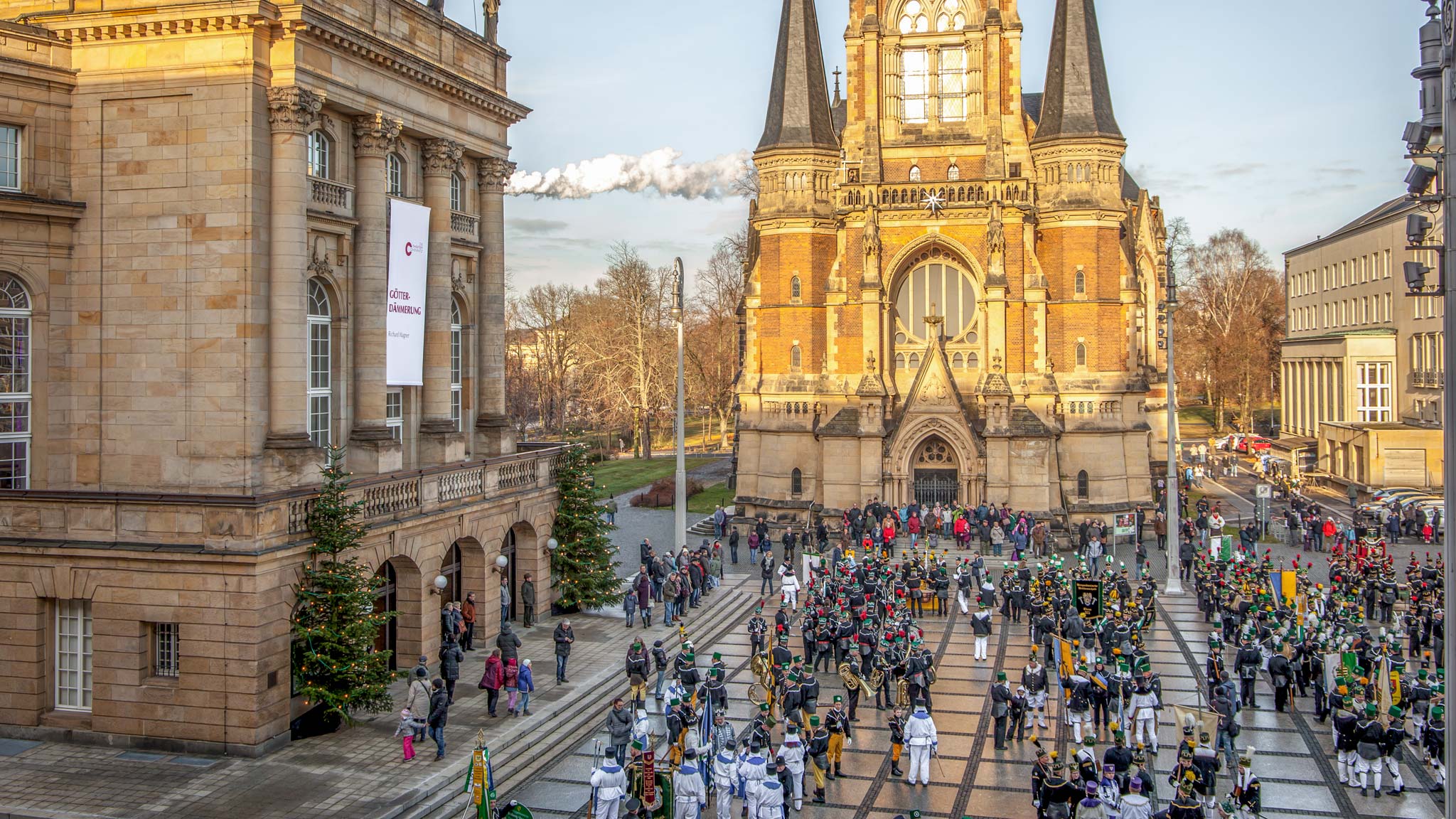
Welcome to Chemnitz
I arrived in Chemnitz and checked in to the grand Hotel Chemnitzer Hof alongside the opera house.
Chemnitz is a different kind of city and the third largest in Saxony after Dresden and Leipzig. Heavily damaged after the war, it’s become much more modern and celebrates that down to its slogan, than it’s neighbours. Although many of the photos you see here look old-world and traditional, the glowing LED lights of the train station, and a modern tram network make it rather stylish in reality.
I wouldn’t be doing justice to you, my readers, if I wasn’t honest, as sadly this summer Chemnitz came into the worldwide press due to some large-scale demonstrations that turned violent. I only mention this as on my first night here, with streets near empty except multiple blue flashing lights from and police vans at each intersection, I saw one of these protests passing by.
It was silent, and there was no drama at this one, but it’s something I feel the need to share as I know some, especially those visiting with kids, may want to read up on this further and ensure their visit doesn’t coincide with one of these planned protests. I won’t go further into the politics of this here, as I want to stick to Christmas cheer firmly.
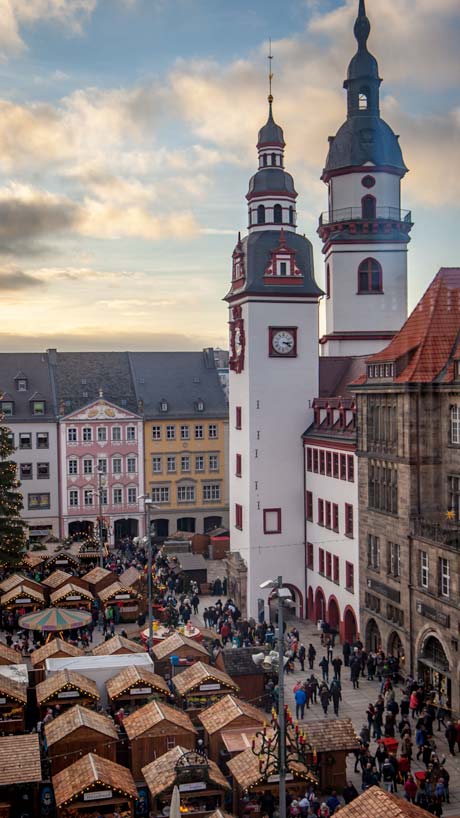
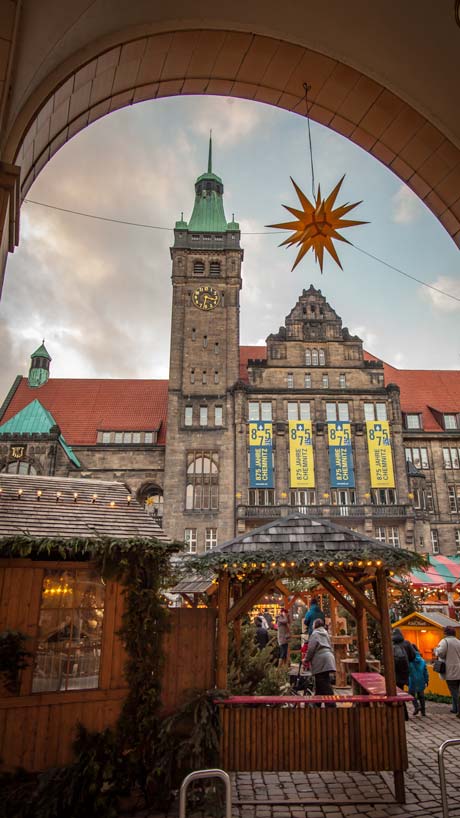
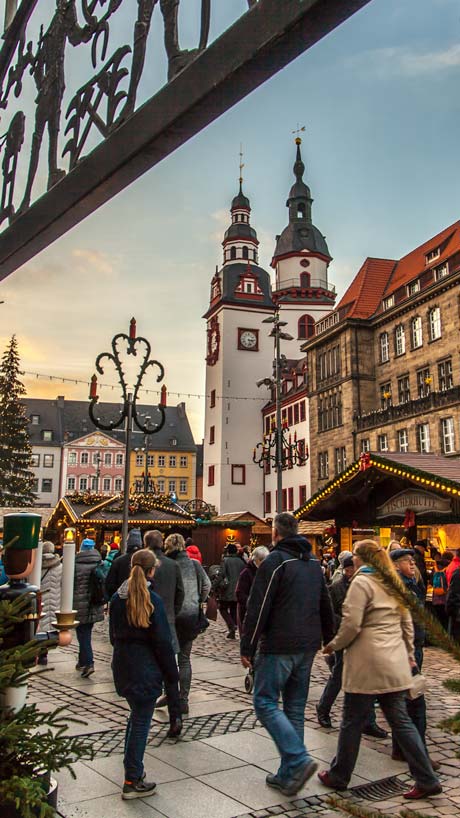
Miners´Parade in Chemnitz
The main reason for my visit to Chemnitz was to witness a much more heartwarming parade, and as with the tradition of the miners, Chemnitz offers that up.
After a week in Saxony, I had become accustomed to the arch-shaped candle holders in nearly every window. These are known as Schwibbögen, and the shape represents the miners’ cave, with the light at each house window to call the miners’ home.
These miner parades happen across the Ore Mountains, and the call of ‘Glück auf! Glück auf! – der Steiger kommt‘ which means the miner is coming, ring out across the streets as the parade begins.
In Chemnitz, the grand parade occurs on the eve of the first Sunday in Advent, and 1000s of marchers, in traditional outfits, delight the crowds as they march through the city, music blaring from their instruments, before arriving at the main square to join in harmony altogether.
Read more: Things to do in Leipzig
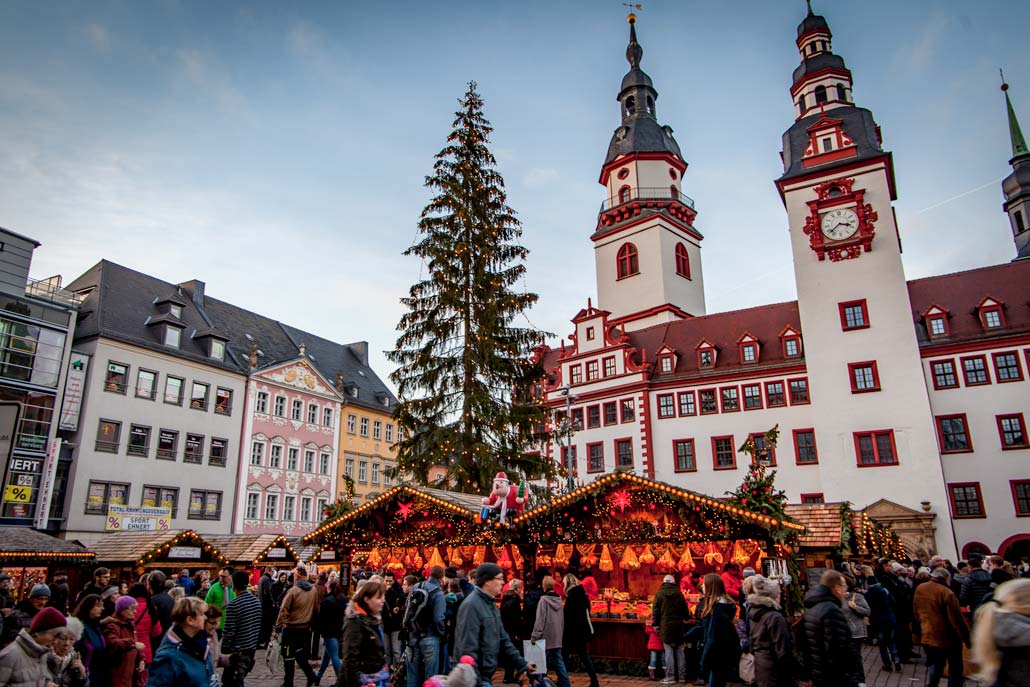
Chemnitz Christmas Market
Lastly, but by no means least, suddenly it was time for my last Christmas Market in Saxony, and there is no more perfect setting than the magical market of Chemnitz.
Stretching in all directions from the square, the Ferris wheel, 12-metre pyramid, and various food, drinks and traditional Ore Mountain stalls were heaving with festivities on the Saturday afternoon I visited. As I filmed my last scene and gathered my final Christmas gifts, I was dreading leaving this winter wonderland where problems seemed to fade away, and Christmas festivities in all their glory washed over you.
For the best views of the market and an aerial look, take to the coffee shop on the department store. From here you can see the multicoloured, and few remaining old buildings of Chemnitz in all their glory, before returning to the action for the final glass of Glühwein.
With festive cheer in abundance, it was with a heavy heart I jumped on my high-speed train to Berlin to catch my homebound flight. But fear not, as if you haven’t read all about Christmas in Dresden, the capital of Saxony, I’ve got a lot more Christmas magic to offer you on that article.

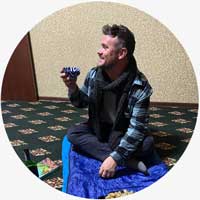


Loved the post. Those pictures of handicrafts by Wendt & Kühn-Figurenwelt are really beautiful. I would love to visit Seiffen.
It’s a magical place, a true ‘Christmas Village’ so to speak :)
This post is awesome, I’m glad I found it. Thank you for giving me ideas!
I haven’t visited a Christmas market this year and I lament that fact while browsing through your photos! It looks like winter wonderland perfection. Seiffen is definitely on my list now that you mentioned the nutcracker museum!! :-)